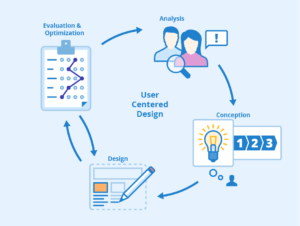What’s Left When the Cookie Goes Away?

What's Left When the Cookie Goes Away
Introduction:
The digital marketing world is in the midst of a major transformation as third-party cookies, once a cornerstone of online advertising, are being phased out. Major web browsers like Google Chrome have announced plans to stop supporting third-party cookies in the near future, raising questions about the future of digital marketing. In this blog post, we’ll explore what’s left when the cookie goes away and how businesses can adapt to this evolving landscape.
Understanding the Cookieless Future:
Cookies are small pieces of data that websites place on a user’s browser to track their online activity. They’ve been widely used for ad targeting, analytics, and personalization. However, growing privacy concerns and regulatory changes are pushing the industry towards a cookieless future.
What’s Left Without Cookies?
First-Party Data: First-party data, which comes directly from your audience, is becoming even more valuable. This includes data from your website, apps, and CRM systems. It’s more reliable and less reliant on third-party cookies.
Contextual Targeting: Contextual targeting involves placing ads on websites or web pages that are relevant to the content, rather than relying on user data. It’s privacy-friendly and will play a more significant role in the post-cookie era.
Unified ID Solutions: Industry initiatives like Unified ID 2.0 aim to create a common identifier that respects user privacy. This can help bridge the gap left by third-party cookies.
Machine Learning and AI: Machine learning algorithms can analyze data and patterns to predict user behavior without relying on individual user data. This helps with personalization and targeting.
Content Quality: High-quality, relevant content is more important than ever. It attracts and engages users without needing extensive tracking.
Contextual Advertising: Contextual advertising relies on the context of the content a user is viewing to display relevant ads. This approach respects user privacy and is effective in reaching the right audience.
First-Party Cookies: First-party cookies, which are set by the website the user is visiting, are not affected by third-party cookie changes. These can still be used for tracking and personalization.
Email Marketing: Email marketing remains a powerful tool for reaching and engaging with your audience, especially when you have permission to contact them directly.
Adapting to the Post-Cookie Landscape:
Invest in First-Party Data: Focus on collecting and leveraging first-party data from your website and customer interactions. This data is more reliable and less affected by third-party cookie changes.
Embrace Contextual Advertising: Start implementing contextual advertising strategies that target users based on the content they’re viewing rather than their browsing history.
Privacy Compliance: Ensure your data collection and usage practices are in compliance with privacy regulations like GDPR and CCPA.
Adopt Machine Learning and AI: Explore machine learning and AI solutions that can analyze user behavior and help with personalized content and ads.
Content Marketing: Invest in high-quality, relevant content that attracts and engages your target audience naturally.
Email Marketing Optimization: Strengthen your email marketing strategies to reach and engage with your audience directly.
Conclusion:
The impending departure of third-party cookies doesn’t signal the end of digital marketing; it marks the beginning of a new era. By focusing on first-party data, embracing contextual advertising, ensuring privacy compliance, and leveraging emerging technologies, businesses can continue to reach and engage with their target audience effectively. In this cookieless future, it’s the businesses that adapt and innovate that will thrive and successfully navigate the evolving landscape of digital marketing.
For More Related Articles Browse Our Website Blogster.pk
For social Connection You can also Visit and follow our Social media Platforms
Facebook , Instagram, Linkedin, Pinterest, Quora, Twitter, Youtube.





